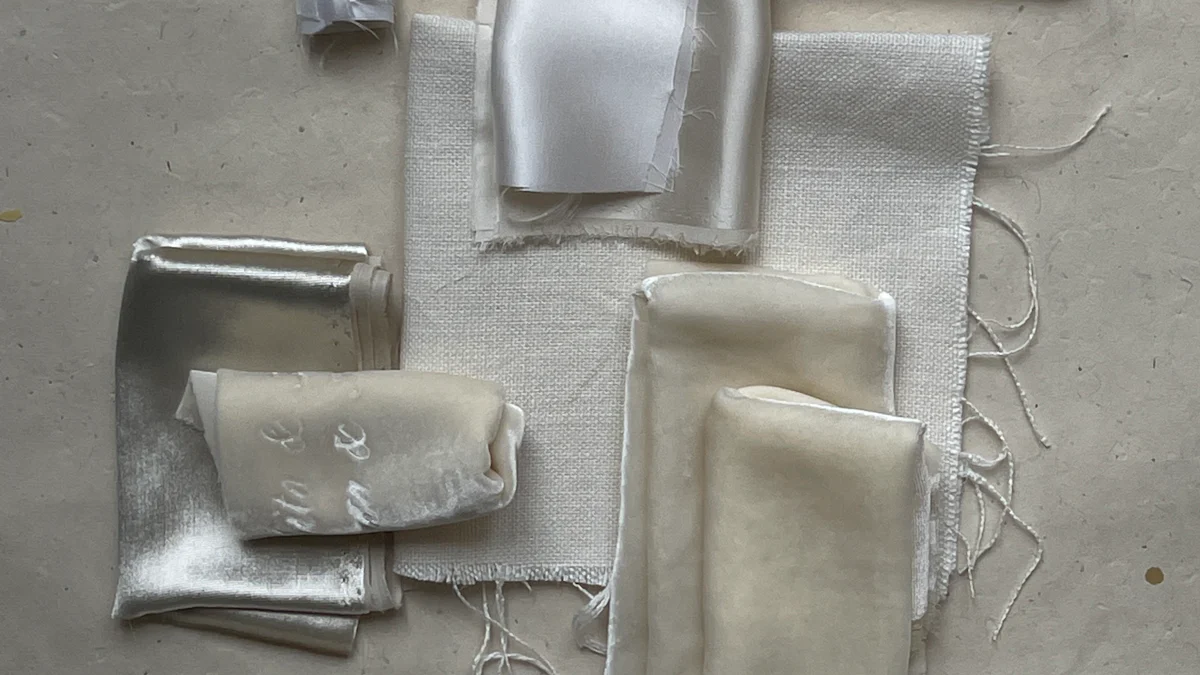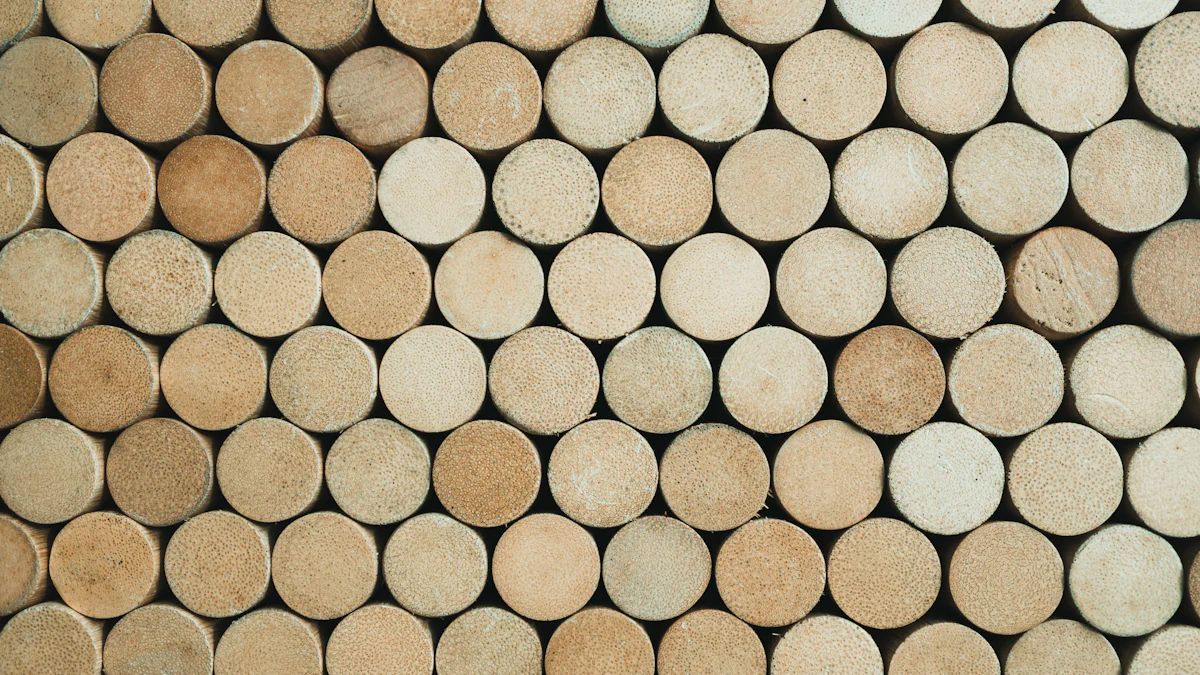
High-temperature environments demand materials that can endure extreme conditions without compromising performance. Susceptors, essential components in industrial processes, require exceptional thermal stability and durability. Silicon carbide (SiC) coatings have emerged as a reliable solution due to their unique properties, including high thermal resistance and chemical stability. These coatings, particularly in the form of cvd sic coating susceptor, address challenges like oxidation and corrosion, which often degrade other materials. Selecting the right susceptor material ensures efficiency and longevity in demanding applications, making SiC coatings a critical innovation in this field.
Key Takeaways
- Silicon carbide (SiC) coatings are highly effective for high-temperature applications due to their exceptional thermal stability and chemical resistance.
- Susceptors play a crucial role in industrial processes by absorbing electromagnetic energy and converting it into heat, ensuring precise temperature control.
- When selecting susceptor materials, consider thermal stability, chemical resistance, mechanical strength, and cost-effectiveness to ensure optimal performance.
- SiC-coated susceptors outperform alternatives like graphite and metal alloys in harsh environments, providing better durability and efficiency.
- Despite their advantages, SiC coatings can be expensive to produce and may face challenges like grain boundary corrosion in certain chemicals.
- Innovations in deposition techniques and material science are aimed at improving the performance and reducing the costs of SiC coatings for broader industrial use.
- Industries such as semiconductor manufacturing and chemical processing can significantly benefit from the use of SiC-coated susceptors for enhanced operational efficiency.
The Role of Susceptors in High-Temperature Applications

Functions of Susceptors in Industrial Processes
Susceptors play a vital role in industrial processes that involve high temperatures. These components absorb electromagnetic energy and convert it into heat, enabling precise temperature control. Industries such as semiconductor manufacturing, chemical processing, and material synthesis rely on susceptors to maintain stable thermal environments. For instance, in chemical vapor deposition (CVD) systems, susceptors ensure uniform heating, which is critical for producing high-quality coatings and films.
In addition to heat generation, susceptors act as protective barriers. They shield sensitive materials from direct exposure to extreme conditions, such as intense radiation or corrosive gases. This function enhances the durability of equipment and improves the efficiency of industrial operations. By facilitating controlled thermal environments, susceptors contribute to consistent product quality and reduced operational risks.
Key Requirements for High-Temperature Susceptor Materials
High-temperature applications demand materials with exceptional properties. Thermal stability ranks as one of the most critical requirements. Susceptor materials must withstand prolonged exposure to extreme heat without deforming or losing functionality. Silicon carbide (SiC) coatings, particularly in the form of cvd sic coating susceptor, excel in this regard due to their high melting point and resistance to thermal shock.
Chemical resistance also plays a significant role. Many industrial processes involve reactive gases or corrosive substances. Susceptor materials must resist oxidation, corrosion, and chemical degradation to ensure long-term performance. SiC coatings meet this requirement by forming a protective layer that prevents chemical interactions.
Mechanical strength is another essential factor. Susceptors often endure mechanical stress during operation. Materials must resist cracking, warping, or other forms of damage under high-pressure and high-temperature conditions. Furthermore, emissivity, or the ability to emit thermal radiation, enhances the efficiency of susceptors. Materials like SiC exhibit high emissivity, making them ideal for applications requiring efficient heat transfer.
Comparison of SiC Coatings with Alternative Materials

Criteria for Evaluating Susceptor Materials
Selecting the right material for high-temperature susceptors requires careful evaluation. Several criteria determine the suitability of a material for these demanding applications. Thermal stability stands as a primary factor. Materials must endure extreme heat without deforming or losing their structural integrity. Chemical resistance is equally important. Many industrial processes expose susceptors to corrosive gases or reactive chemicals, so materials must resist oxidation and corrosion.
Mechanical strength also plays a critical role. Susceptors often face mechanical stress during operation, requiring materials that can withstand cracking or warping. Emissivity, the ability to emit thermal radiation, enhances heat transfer efficiency. Materials with high emissivity, such as silicon carbide, perform well in this regard. Cost-effectiveness and ease of manufacturing also influence material selection. While performance is crucial, industries must balance it with economic feasibility.
Advantages and Disadvantages of SiC Coatings
Silicon carbide coatings offer several advantages in high-temperature applications. Their exceptional thermal stability allows them to function effectively in extreme heat. These coatings resist oxidation and corrosion, making them ideal for environments with reactive gases. The mechanical durability of SiC coatings ensures long service life, even under high stress. Additionally, their high emissivity improves heat transfer efficiency, which is vital in processes like chemical vapor deposition.
However, SiC coatings have limitations. The cost of producing chemically vapor-deposited silicon carbide coatings can be high. This factor may deter industries with tight budgets. Application challenges also arise, as achieving uniform coating thickness requires advanced techniques. Furthermore, SiC-coated susceptors may experience grain boundary corrosion when exposed to certain chemicals, such as chlorine. Despite these drawbacks, the benefits of SiC coatings often outweigh their disadvantages in many industrial scenarios.
Alternative Materials for High-Temperature Susceptors
Graphite
Graphite serves as a common material for high-temperature susceptors. It offers excellent thermal conductivity and can withstand high temperatures. Its lightweight nature makes it easy to handle and install. However, graphite is prone to oxidation in the presence of oxygen at elevated temperatures. Protective coatings, such as SiC, are often applied to enhance its performance. Graphite's affordability makes it a popular choice in industries with budget constraints.
Metal Alloys
Metal alloys, such as nickel-based or stainless steel alloys, provide another option for susceptor materials. These alloys exhibit good mechanical strength and thermal conductivity. They resist deformation under high stress, making them suitable for demanding applications. However, metal alloys can react with certain chemicals at high temperatures, leading to degradation. Their lower emissivity compared to SiC reduces their efficiency in heat transfer applications. Despite these limitations, metal alloys remain a viable choice for specific use cases.
Ceramic Coatings
Ceramic coatings, including silicon nitride and aluminum oxide, offer high thermal stability and chemical resistance. These materials perform well in corrosive environments and maintain their integrity under extreme heat. Their brittleness, however, poses a challenge. Ceramics are more prone to cracking under mechanical stress compared to SiC or metal alloys. The cost of manufacturing ceramic-coated susceptors can also be high. Nonetheless, their unique properties make them suitable for specialized applications.
Case Studies and Experimental Findings
Performance of CVD SiC Coating Susceptors in Industrial Applications
Industries have extensively tested chemically vapor-deposited (CVD) silicon carbide (SiC) coating susceptors in high-temperature environments. These tests reveal their exceptional performance in applications requiring thermal stability and chemical resistance. For instance, semiconductor manufacturing processes often expose susceptors to extreme heat and reactive gases. CVD SiC coating susceptors maintain their structural integrity and resist oxidation under such conditions. This durability ensures consistent performance over extended periods.
In chemical vapor deposition systems, these susceptors demonstrate superior heat distribution. Their high emissivity allows efficient thermal radiation, which enhances the uniformity of coatings and films. Researchers have also observed that CVD SiC coating susceptors resist corrosion when exposed to harsh chemicals like hydrogen chloride. This property makes them suitable for environments where other materials degrade quickly. The combination of thermal stability, chemical resistance, and mechanical strength positions these susceptors as reliable solutions for demanding industrial applications.
Comparative Analysis of SiC-Coated Graphite and Other Materials
Studies comparing SiC-coated graphite with alternative materials highlight significant differences in performance. SiC-coated graphite excels in high-temperature applications due to its unique combination of properties. The SiC layer provides excellent thermal stability and protects the graphite core from oxidation. This coating also enhances the mechanical strength of the susceptor, reducing the risk of cracking or warping under stress.
In contrast, uncoated graphite struggles in oxidizing environments. It degrades quickly when exposed to oxygen at elevated temperatures. Metal alloys, while strong, often react with certain chemicals, leading to corrosion. Ceramic coatings offer high thermal stability but lack the mechanical flexibility of SiC-coated graphite. They are more prone to cracking under mechanical stress.
Experimental findings also reveal differences in emissivity. SiC-coated graphite exhibits higher emissivity compared to metal alloys, making it more efficient in heat transfer applications. However, researchers note that achieving uniform SiC coatings on graphite requires advanced techniques. Despite this challenge, the benefits of SiC-coated graphite outweigh its limitations in many industrial scenarios. Its ability to combine the advantages of both graphite and SiC makes it a preferred choice for high-temperature susceptors.
Challenges and Future Directions for Susceptor Materials
Limitations of Current High-Temperature Materials
High-temperature materials face several limitations that hinder their performance in demanding industrial environments. Many materials struggle to maintain structural integrity when exposed to prolonged extreme heat. Thermal expansion often leads to cracking or warping, reducing the lifespan of susceptors. For example, uncoated graphite degrades rapidly in oxidizing environments, while metal alloys may deform under sustained high temperatures.
Chemical resistance remains another significant challenge. Reactive gases and corrosive substances, commonly present in industrial processes, can deteriorate materials over time. Metal alloys, despite their strength, often corrode when exposed to chemicals like chlorine or hydrogen chloride. Ceramic coatings, while resistant to corrosion, exhibit brittleness, making them prone to mechanical failure under stress.
Cost-effectiveness also limits the adoption of advanced materials. High-performance options, such as chemically vapor-deposited silicon carbide (CVD SiC), require complex manufacturing processes. These processes increase production costs, making them less accessible for industries with budget constraints. Additionally, achieving uniform coatings, especially for materials like cvd sic coating susceptor, demands precision techniques, which further adds to the expense.
Innovations in CVD SiC Coating Susceptors
Recent innovations in CVD SiC coating susceptors aim to address these limitations and enhance their performance. Researchers have developed advanced deposition techniques to improve coating uniformity. These techniques ensure consistent thickness across the susceptor surface, reducing weak points that could lead to failure. Enhanced uniformity also improves thermal conductivity, enabling more efficient heat transfer in high-temperature applications.
Material scientists are exploring ways to increase the chemical resistance of CVD SiC coatings. By modifying the deposition process, they aim to create denser coatings with fewer grain boundaries. This approach minimizes the risk of grain boundary corrosion, particularly in environments containing reactive gases like chlorine. Improved chemical resistance extends the service life of susceptors, reducing maintenance costs for industries.
Efforts to lower production costs have also gained momentum. Researchers are investigating alternative methods for producing CVD SiC coatings, such as using less expensive raw materials or optimizing energy consumption during deposition. These advancements make high-performance susceptors more accessible to a broader range of industries.
Future directions include integrating smart technologies into susceptor design. For instance, embedding sensors within susceptors could enable real-time monitoring of temperature and stress levels. This innovation would allow industries to predict failures and perform maintenance proactively, enhancing operational efficiency. As these advancements continue, CVD SiC coating susceptors are poised to play an even more critical role in high-temperature applications.
Silicon carbide coatings provide significant advantages for high-temperature applications. Their thermal stability ensures reliable performance under extreme heat. Their chemical resistance protects against oxidation and corrosion, while their mechanical durability supports long-term use in demanding environments. However, these coatings face challenges, including high production costs and application complexities. Industries can benefit from using a cvd sic coating susceptor in processes requiring superior thermal and chemical performance. Further research should focus on reducing costs and improving coating techniques to expand their accessibility and efficiency in industrial applications.
FAQ
What is a susceptor, and why is it important in high-temperature applications?
A susceptor is a material or component that absorbs electromagnetic energy and converts it into heat. This heat enables precise temperature control in industrial processes. Susceptors are crucial in applications like semiconductor manufacturing and chemical vapor deposition (CVD) because they ensure uniform heating and protect sensitive materials from extreme conditions.
Why is silicon carbide (SiC) a preferred material for susceptor coatings?
Silicon carbide (SiC) offers exceptional thermal stability, chemical resistance, and mechanical strength. These properties make it ideal for high-temperature environments. SiC coatings resist oxidation and corrosion, ensuring long-term performance. Their high emissivity also enhances heat transfer efficiency, which is critical in processes like CVD.
How does SiC compare to graphite as a susceptor material?
Graphite provides excellent thermal conductivity and is lightweight, making it easy to handle. However, it oxidizes at high temperatures when exposed to oxygen. SiC-coated graphite combines the benefits of both materials. The SiC layer protects the graphite core from oxidation and enhances its mechanical strength, making it more durable in extreme environments.
What are the main challenges of using SiC coatings?
The production of SiC coatings, especially through chemical vapor deposition (CVD), can be expensive. Achieving uniform coating thickness requires advanced techniques, which adds to the cost. Additionally, SiC-coated susceptors may experience grain boundary corrosion when exposed to certain chemicals, such as chlorine.
Are there alternatives to SiC coatings for high-temperature susceptors?
Yes, alternatives include graphite, metal alloys, and ceramic coatings. Graphite is affordable but requires protective coatings to prevent oxidation. Metal alloys offer good mechanical strength but may corrode in reactive environments. Ceramic coatings provide high thermal stability but are brittle and prone to cracking under stress.
What industries benefit the most from SiC-coated susceptors?
Industries like semiconductor manufacturing, chemical processing, and material synthesis benefit significantly from SiC-coated susceptors. These industries require materials that can withstand extreme heat and corrosive environments while maintaining performance and durability.
How do CVD SiC coatings improve susceptor performance?
CVD SiC coatings enhance thermal stability, chemical resistance, and mechanical strength.
What innovations are improving the performance of SiC-coated susceptors?
Researchers are developing advanced deposition techniques to improve coating uniformity and reduce weak points. Efforts to increase chemical resistance focus on creating denser coatings with fewer grain boundaries. Innovations also aim to lower production costs by optimizing energy consumption and exploring alternative raw materials.
Can SiC-coated susceptors be used in corrosive environments?
Yes, SiC-coated susceptors perform well in corrosive environments. The SiC layer resists oxidation and chemical degradation, even when exposed to reactive gases like hydrogen chloride. However, grain boundary corrosion may occur in the presence of certain chemicals, such as chlorine.
What factors should industries consider when selecting susceptor materials?
Industries should evaluate thermal stability, chemical resistance, mechanical strength, and emissivity. Cost-effectiveness and ease of manufacturing also play a role. Materials like SiC excel in high-temperature and corrosive environments, making them a preferred choice for demanding applications.

No comments:
Post a Comment